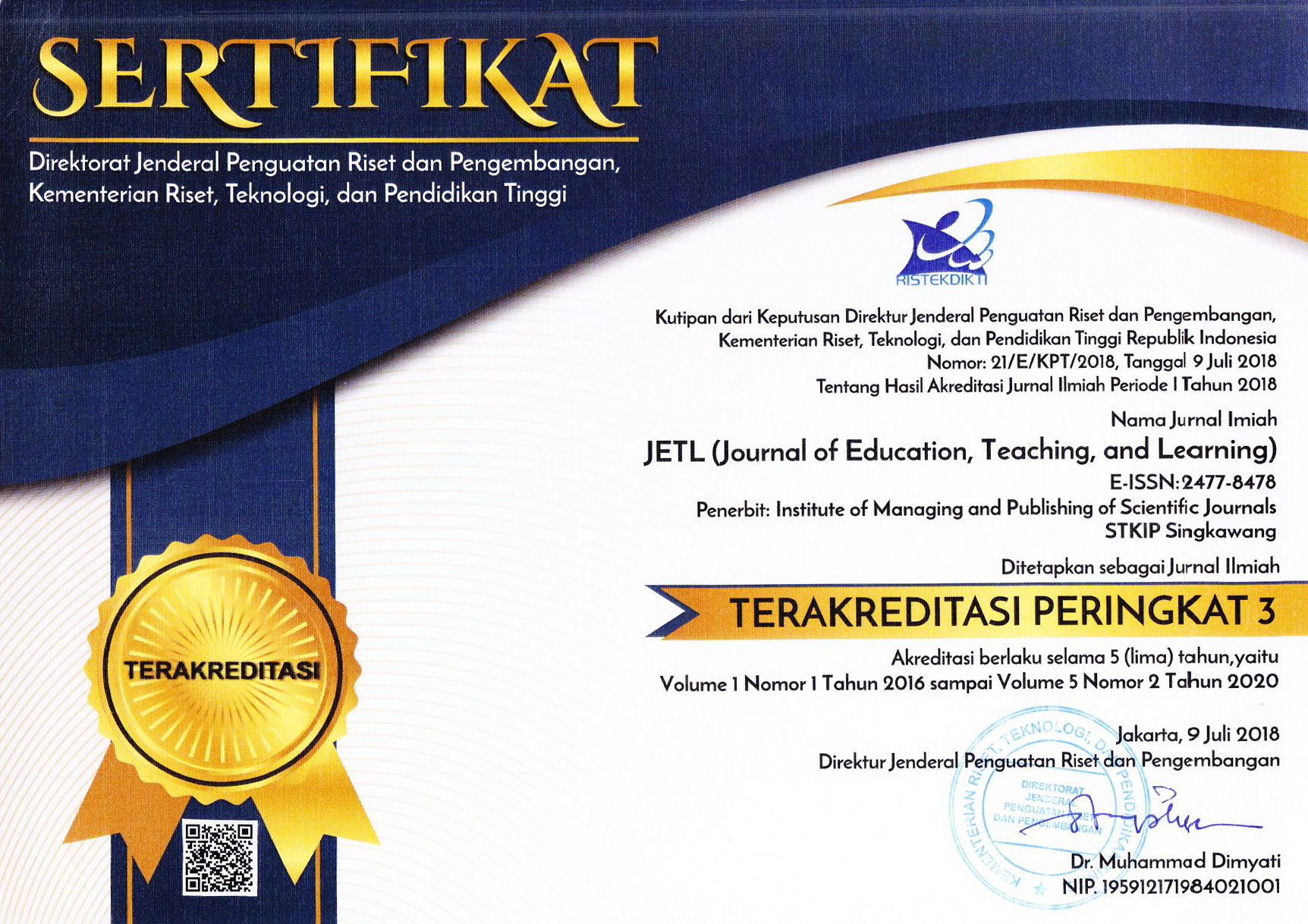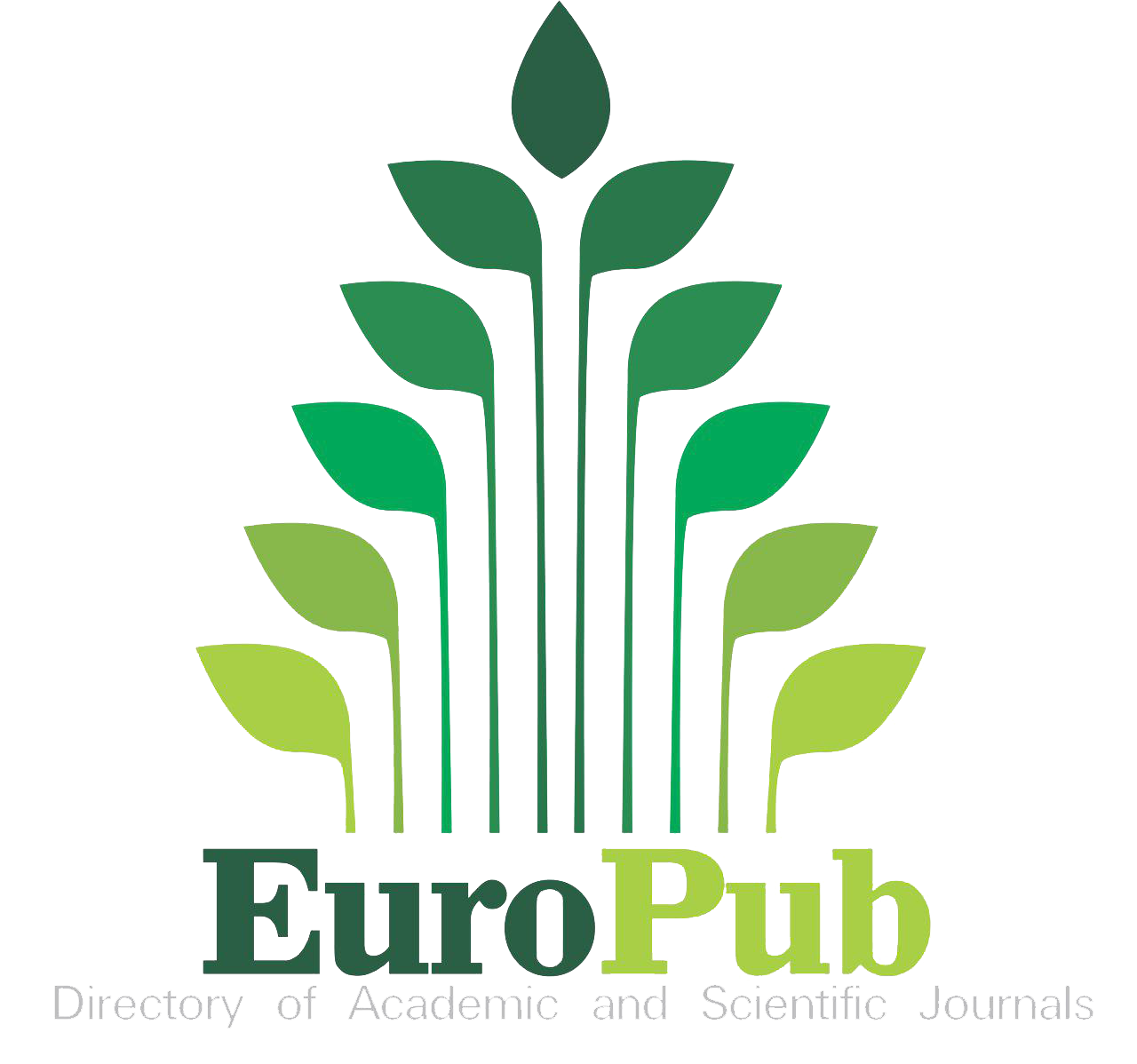Dance Video Development Tutorial Betaja Dayak Kancing’k Meliau District for Art Culture Learning in Junior High School
Abstract
The purpose of this study was to develop a video tutorial for the Betaja Dayak Kancing’k dance in the Meliau sub-district for learning Cultural Arts in Junior High School. To achieve the research objectives, the Research and Development (R&D) method of the ADDIE development model was used. With the ADDIE Development model, the research is carried out through the stages of (1) Analyze, (2) Design, (3) Develop, (4) Implement, and (5) Evaluate. This research was conducted at SMP Brother Pontianak 9th grade with 30 students and four validators, design experts, media experts, and dance learning materials experts. Data from expert instruments with qualitative and quantitative analysis as a whole from the results of data analysis (in the range of values 1-5) The tutorial video design was declared "Very feasible" with an average of 4.27. Likewise, the analysis of empirical test data with individual test procedures, small groups, and field tests. The 32 9th grade students of Brother Pontianak Junior High School with an average skill score of 88 in the "Very Good" category. The results of the effectiveness test in this study were the results of the dancing skills of the students, the results of which were 30 students, which showed that as many as 24 students got an average score of 85 and 6 students with an average of 65 students, it was concluded that the average result of students' dancing skills was 81.22 with a very good category. good. With the data obtained, video tutorials can be applied in junior high schools in learning arts and culture with dance material.
Keywords
Full Text:
PDFReferences
Agni, E. W. (2014). “Faktor-faktor Penghambat Pembelajaran Seni Tari di SMP Negeri 4 Wonosari”. Skripsi. Universitas Negeri Yogyakarta
Ariyanti, D (2020) Multimedia Interaktif Berbasis Ispring suite 8. Jurnal Education and Development, 8(2).
Branch, R. M. (2009). Instructional Design:The ADDIE Approach. New York: Springer.
Caesariani, N. A. (2018). Pemanfaatan Multimedia Interaktif pada Model Problem Based Learning (PBL) dalam Pembelajaran Matematika. Jurnal Pendidikan Tambusai, 2(2), 832-840.
Evans, Rupert N, dan Edwin, Lewis H. (1978). Foundation of Vocational Education. Ohio: Charles E. Merril Publishing Company.
Griffey, J. (2020). Introduction to Interactive Digital Media. Newyork: Routledge
Hardani (2020). Metode Penelitian Kualitatif & Kuantitatif. Yogyakarta: CV. Pustaka Ilmu Group.
Khalid, M. S., Alias, M., Razally, W., Yamin, S., & Herawan, T. (2010). The effect of using an interactive multimedia courseware within a collaborative learning environment on the learning of pre-algebra concepts among pre-university engineering students. Procedia-Social and Behavioral Sciences, 8, 571-579.
Marizana, M V. (2013). “Model Evaluasi Pembelajaran Seni Tari di SMA Negeri 2 Padang”. Skripsi. Universitas Negeri Padang.
Mering, A. (2020). Pengembangan Instrumen Penilaian dan Penelitian. Pontianak: IAIN Pontianak Press.
Munir. (2012). Multimedia Konsep & Aplikasi Dalam Pendidikan. Bandung: ALFABETA.
Ningsih. (2013). Penerapan Teknik Penilaian pada Pelajaran Seni Musik di SMP Negeri 4 Kecamatan Guguak. Skripsi. Universitas Negeri Padang
Nurlatifah. (2014). Penilaian Autentik pada Mata Pelajaran Seni Tari dalam Implementasi Kurikulum 2013 untuk Siswa Kelas VII di SMP Negeri 1 Sukarame Kabupaten Tasikmalaya. Skripsi. Universitas Pendidikan Indonesia.
Parata, T. P., & Zawawi, M. (2018). Pemanfaatan Multimedia Interaktif Pembelajaran IPA-Biologi Terhadap Motivasi dan Kemampuan Kognitif Siswa SMP Negeri 14 Kota Palembang. Jurnal Ecoment Global, 3(2), 52-78.
Putri, E, D, P. (2018). Pengembangan Multimedia Pembelajaran Interaktif Kimia Berbasis Android Menggunakan Prinsip Mayer Pada Materi Laju Reaksi. Jurnal Inovasi Teknologi Pendidikan, 5(1).
Rajendra, I. M., & Sudana, I. M. (2018). The influence of interactive multimedia technology to enhance achievement students on practice skills in mechanical technology. Journal of Physics: Conference Series, 953(1).
Rusman. (2018). Belajar dan Pembelajaran Berbasis Komputer: Mengembangkan Profesionalisme Guru Abad 21. Bandung: Alfabeta.
Sugiyono. (2016). Metode Penelitian Kuantitatif, Kualitatif, dan R&D. Bandung: Alfabeta.
Sutirman. (2013). Media & Model-Model Pembelajaran Inovatif. Yogyakarta: Graha Ilmu.
DOI: http://dx.doi.org/10.26737/jetl.v8i1.3209
Refbacks
- There are currently no refbacks.

This work is licensed under a Creative Commons Attribution-NonCommercial 4.0 International License.
Published by:
Institute of Managing and Publishing of Scientific Journals STKIP Singkawang
Sekolah Tinggi Keguruan dan Ilmu Pendidikan (STKIP) Singkawang
Address : STKIP Singkawang, Jalan STKIP - Kelurahan Naram Singkawang, Kalimantan Barat, INDONESIA, 79251
No. Telp. : +62562 420 0344
No. Fax. : +62562 420 0584
JETL (Journal of Education, Teaching, and Learning)
e-ISSN : 2477-8478
p-ISSN : 2477-5924

Editor in Chief Contact: [email protected] / Wa: +6282142072788
Publisher Contact: [email protected] / Wa: +6282142072788
Management Tools
JETL Indexed by:
JETL (Journal of Education, Teaching, and Learning) is licensed under a Creative Commons Attribution-NonCommercial 4.0 International License.











